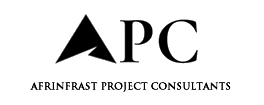
The introduction of the Code for Construction Product Information (CCPI) has placed a renewed emphasis on the importance of how product information is managed and shared. With the CCPI scheme designed to improve standards and increase transparency in the industry, Emma Taylor, marketing manager at FSi Promat, discusses why CCPI assessment is essential to building confidence in the fire safety – and wider construction – industry
Following the Hackitt Review – which highlighted failures and inconsistencies in construction product information as a major safety risk – the Construction Product Association (CPA) developed the CCPI scheme to improve standards across the construction industry and provide greater confidence that “product information is clear, accurate, accessible, up-to-date and unambiguous”, supporting the Building Safety Act’s move towards increased transparency across the sector.
Accountability is needed at every level of the built environment, with the skills and competence in place at every stage of the project from development through to installation, and this needs to be underpinned with accurate, reliable and up-to-date product data. The CCPI has been launched to address this need for accessible, reliable and tested guidance on building products, including those designed for passive fire protection.
Building safety depends on robust systems, competency and clear information. As manufacturers of specialist fire stopping products designed to reinstate compartmentation and prevent the spread of fire for a defined period of time, FSi Promat signed up to the CCPI scheme to provide greater confidence to those professionals specifying and installing their products and make sure that the evidence behind our product claims is also easy to access.
There is a significant pace of change in the construction industry that legislation often struggles to keep up with, and the CCPI has created a process that ensures access to reliable, up-to-date information that is essential in correct specification of life critical fire safety systems.
However, as a voluntary code, there remains a gap in consistency within the industry that can only be rectified by all manufacturers signing up to this vital scheme. Accessible, third-party tested product information is crucial if the sector wants to continue to rebuild safety and confidence back into our built environment.
Improving trust
It is essential that everyone who supplies, specifies or installs passive fire protection products – which are essential for life-critical safety – has confidence in the information that they receive from manufacturers. To gain trust, manufacturers must take the product information that they put out into the marketplace seriously and make a vital step forward in instilling confidence in the reliability of passive fire protection products.
The CCPI ties in closely to the need for transparency and for all parties to actively demonstrate competence amid wider industry changes, including the introduction of the Building Safety Act.
However, as a voluntary code, participation in the CCPI demonstrates a move beyond regulatory compliance, signalling a genuine commitment to changing industry culture and a dedication to ensuring clear, accurate and ethical product information is available to all stakeholders.
The CCPI code is distinctly split into two areas: distribution and manufacturing. Manufacturers must abide by the CCPI code under 11 clauses covering areas such as the compiling, storing and sharing of up-to-date, accurate product information.
Within these areas key components such as documenting sign-off, the use of plain language, verifiable performance claims and readily accessible safety information are outlined as standards companies must adhere to.
Furthermore, to comply with the code, CCPI stipulates that technical information and support should be easily accessible, and that information has been provided by a representative who demonstrates competency in their knowledge of the system through relevant training and experience.
FSi Promat has worked extensively across the past two years to ensure all the relevant information is in place across its core range of products, and that these products now conform to the CCPI code. This now means that suppliers, specifiers and installers can be assured our products and systems have been through a very robust set of processes that examine all areas of the business, and that any claims we make as a manufacturer are firmly backed by clear, accessible and up-to-date test evidence.
Clear transparency is the way forward for manufacturers to build trust with stakeholders and although conformance with CCPI is not a guarantee of product performance, it demonstrates a vital commitment to the highest standard of product safety, testing and reliability that is vital as the industry continues to evolve.
Improving procurement
Fire safety-critical products are subject to heightened level of scrutiny due to the serious harm that could result from product failure. In order for stakeholders to make informed product choices to ensure fire safety and compliance, they must first have reliable data to support clarity and information accessibility for installers, contractors and specifiers.
Once companies have undergone the rigorous assessment of their leadership, culture and product information management – and provided evidence to support all 11 clauses under the management section of the code – they will receive a licensed mark for a limit of two years as proof of compliance.
Ongoing registration to the CCPI requires continual improvement as well as a demonstrable commitment to continuously updating product data and responding to any issues that may arise.
Thanks to the rigorous, and ongoing nature of CCPI compliance, we can assure our suppliers and customers that all FSi Promat manufactured sealants, batts, collars, wraps and compounds launched prior to 2025 are CCPI assessed. This follows on from securing the standard for our Silverliner range of open state cavity barriers in 2024.
The assessment covers product information for FSi Promat’s Stopseal Batt and Coating, Pyrocoustic, Pyrolastic, PyroPro HPE and LST sealants, PipeBloc Collars and PWP Wraps, NS Putty Pads, PenoPatch, Flexi-Coat, Silverseal Compounds, S-Line Pillows, PS Coating, and Paraflam cavity barriers.
Installers, contractors and specifiers are able to make evidence-based decisions when products are assessed by the CCPI, as registration with the code tells them that manufacturers such as FSi Promat prioritise product performance, safety and quality.
The Golden Thread
To ensure accuracy in the supply chain, both merchants and distributors are required to maintain audit trails and support the manufacturers code by developing policies that support this. This in turn contributes to the “golden thread” of information outlined in the Building Safety Act, which is essential for providing clear product identification and traceability.
Implementing processes to enhance transparency is one of the many ways the industry is moving towards a unified definition of competency, which is needed to ensure and demonstrate best practice at every stage – from specification through to installation – meaning critical details become integrated from the offset, reducing the risk of non-compliance with regulatory requirements that could result in serious harm to buildings and people, particularly in the case of safety-critical products such as those specified for fire stopping.
While there is still no universally accepted definition of “competency” across the sector, industry bodies are increasingly working towards what this should look like with initiatives such as the CCPI. Manufacturers should be taking the initiative and joining up for registration to the CCPI to help demonstrate competence through transparent product and company data.
In order for manufacturers to demonstrate competency and build trust with installers, contractors and specifiers companies must not only look to meet the requirements of regulations such as the Building Safety Act but also look to drive a culture change in the industry that promotes evidence-based practices that demand the highest standards required for building safety.
As part of this higher standard defined by the CCPI, marketing or technical claims made by manufacturers must also fall under strict verification practices that avoid presenting unverified or partial data as proof of superior performance. The use of terms such as “tested to” and “approved under” must replace superlatives such as “unmatched performance” or “exceptional” to avoid overstatement and ambiguity in performance messaging.
The Code for Construction Product Information is a chance to bring the industry together
It is only through volunteering to enforce these high standards of clarity, accuracy and accountability through the sharing of data that we, as an industry, can level the playing field when it comes to consistency in reliable, third-party tested production information.
Access to this information is not only vital in demonstrating the effectiveness of life critical fire safety products but in instilling confidence in their ability to provide a safe living and working environment.
*Please note that this is a commercial profile.
The post The Code for Construction Product Information’s role in building confidence in fire safety appeared first on Planning, Building & Construction Today.

